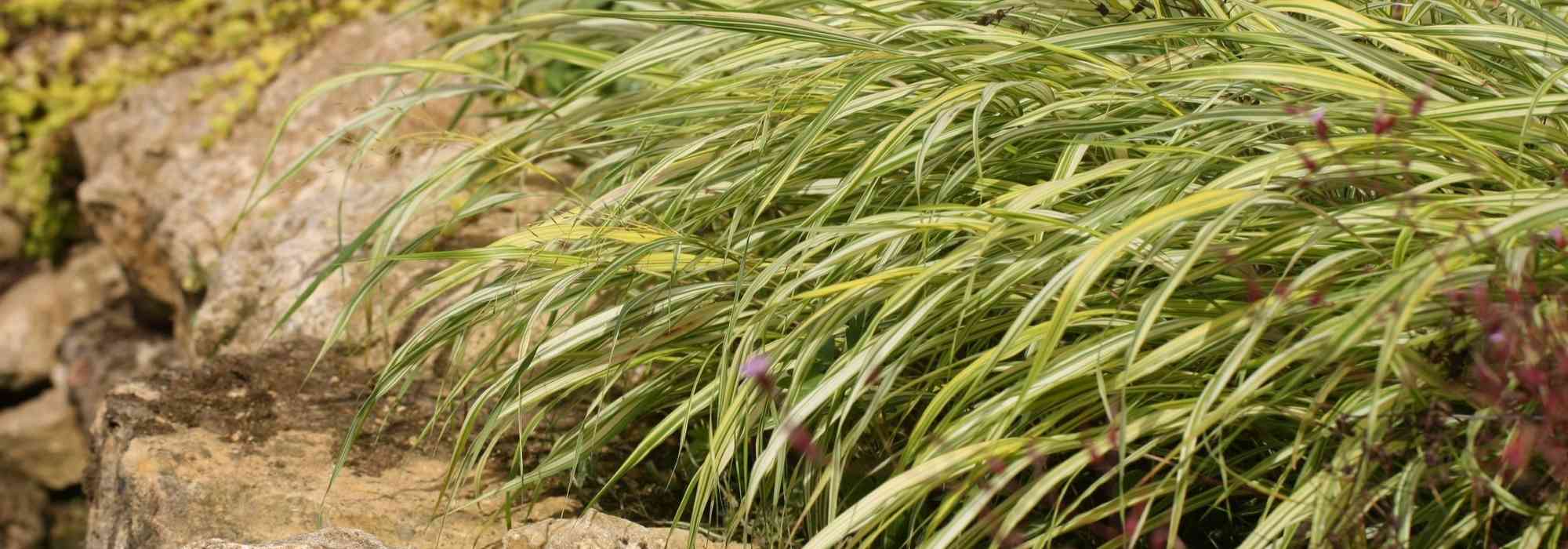
Hakonechloa, Japanese Herb: planting, cultivation and care
Contents
Hakonechloa in a nutshell
- Hakonechloa is a perennial Poaceae (grass) cultivated for its foliage with a supple, trailing habit that brightens shady parts of the garden.
- Fond of humus-bearing, cool soils, Japanese herb appreciates filtered light at woodland edges and in light understoreys.
- With slow growth, it gradually spreads to form superb cushions with a cascading habit.
- Only one species exists, Hakonechloa macra, but many varieties offer foliage ranging from solid green to the most elegant variegation.
- Hardy, Japanese herb with marcescent foliage remains decorative for a long time.
A word from our expert
Deciduous perennial in family Poaceae (grasses), Hakonechloa is a plant native to Japan. It rarely exceeds 50 cm in height in our climates and produces fine foliage reminiscent of bamboo. Its supple habit also gives it a very Japanese appearance.
Main attraction of Japanese forest grass lies in its foliage. If the fine panicles that appear in summer at tips of the culms can add a wispy touch, it is above all for its linear, arching leaves that it is grown. Their colours are solid green for species Hakonechloa macra or variegated (green, cream, yellow or golden) as in Hakonechloa macra aureola. In autumn some may display red to orange hues, as in Hakonechloa macra ‘Nicolas’.
All hakonechloas appreciate fresh, well-drained soils rich in humus. Unlike many Poaceae, they do well in shade or partial shade. Colouring is stronger in more direct exposure but this requires closer monitoring of watering.
Hardy, it is a plant of slow growth that spreads gently by its rootstocks, eventually forming beautifully dome-shaped clumps.
It has no pests and slugs do not even bother with it! Above all, it dislikes dry soil.
Easy to maintain, simply cut back all faded foliage. It is propagated by dividing clumps in spring.
Description and botany
Botanical data
- Latin name Hakonechloa macra
- Family Poaceae
- Common name Japanese forest grass
- Flowering summer
- Height 30 to 50 cm
- Exposure partial shade, shade
- Soil type neutral to acidic, fresh but drained, humus-bearing, light
- Hardiness -15°C
Hakonechloa takes its name from its region of origin. This grass grows naturally on rocky slopes of Japan’s main island, in Mount Hakone region. Native habitat shows that Japanese forest grass, called ‘Hakone Grass’ by English speakers, favours fresh but well-drained, humus-rich soils. However, it can grow in slightly clayey, heavy soil if it remains moist. Leaf colour (particularly autumn display) is more intense in sunnier positions. Hakonechloa also tolerates shade, ideal being dappled light.
This perennial belongs to family Poaceae (grasses), like Miscanthus, Stipa, Pennisetum. Hakonechloa is monotypic: there is only one species, Hakonechloa macra, but several cultivars have been produced by hybridization, offering a range of foliage that can be very bright, such as Hakonechloa macra ‘All Gold’, or with attractive variegation, such as Hakonechloa macra ‘Aureola’.
All display linear leaves, borne on culms with a pendulous habit forming tufts that rise to around 30 cm, sometimes more after a few years, and up to 50 cm for the type species, the most vigorous, Hakonechloa macra.
Its supple habit gives appearance of a large cushion fallen in love with a waterfall. This Japanese grass spreads gracefully in a series of successive waves. Its growth is rather slow and takes several years to reach its maximum.
In autumn, foliage gradually changes colour. Some Japanese forest grasses opt for golden tones while others, such as Hakonechloa macra ‘Nicolas’, display bronze to orange shades.

Foliage of Hakonechloas is elegant and decorative: H. macra, H. macra ‘Aureola’, H. macra ‘All Gold’ and H. macra ‘Naomi’
Like many grasses with marcescent foliage, Hakonechloa remains decorative for part of winter.
Discover Hakonechloa macra ‘All Gold’ on video:
Different varieties of Hakonechloa
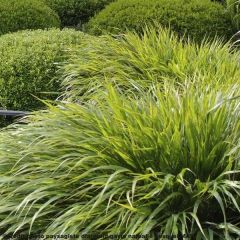
Hakonechloa macra - Japanese Forest Grass
- Flowering time September, October
- Height at maturity 40 cm
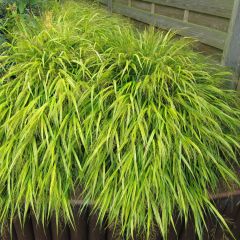
Hakonechloa macra All Gold - Japanese Forest Grass
- Flowering time September
- Height at maturity 40 cm
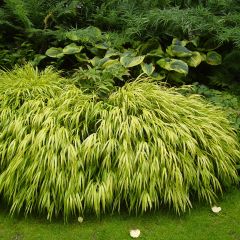
Hakonechloa macra Aureola - Japanese Forest Grass
- Flowering time August, September
- Height at maturity 30 cm
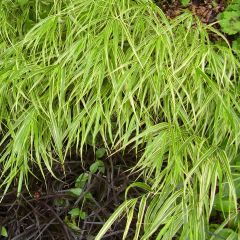
Hakonechloa macra Albostriata - Japanese Forest Grass
- Flowering time September, October
- Height at maturity 40 cm
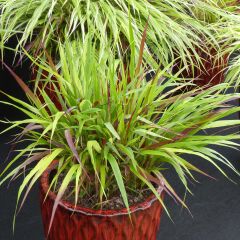
Hakonechloa macra Beni-Kaze - Japanese Forest Grass
- Flowering time August, September
- Height at maturity 50 cm
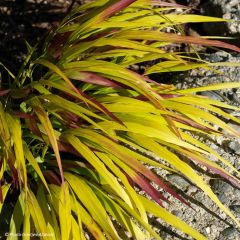
Hakonechloa macra Sunflare - Japanese Forest Grass
- Flowering time August, September
- Height at maturity 40 cm
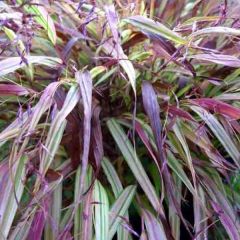
Hakonechloa macra Naomi - Japanese Forest Grass
- Flowering time August, September
- Height at maturity 40 cm
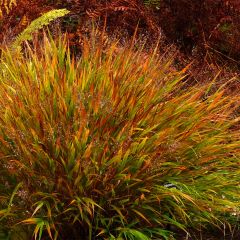
Hakonechloa macra Nicolas - Japanese Forest Grass
- Flowering time July to October
- Height at maturity 40 cm
Discover other Hakonechloa
View all →Available in 0 sizes
Available in 1 sizes
Available in 0 sizes
Available in 2 sizes
Available in 2 sizes
Available in 1 sizes
Available in 2 sizes
Available in 2 sizes
Available in 2 sizes
Available in 2 sizes
Planting Hakonechloa
Where to plant hakonechloa?
Shade and partial-shade perennial, plant these Japanese grasses at foot of trees and bushes to provide beneficial cover from scorching sun rays in warm season. Hakonechloa will appreciate cool banks, light understoreys and woodland edges. North of Loire, they can more easily tolerate growing in sun provided soil remains cool.
They can also punctuate borders or mark corners by softening them. Near a water feature, their fountain habit reinforces impression of coolness while benefiting from ambient moisture.
Habit of Japanese grass also contrasts wonderfully with more mineral surroundings. For massing or large waves, plant 4 to 6 plants per m².
Hakonechloa above all likes soils that retain good moisture levels, which ensure generous development of foliage and beautiful colouration. Light substrates, neutral or acidic and rich in humus ensure vigorous growth in opulent cushions under which weeds are smothered. It can however grow in heavier clay soils, provided their rootstocks do not lack water.
Japanese forest grass can also easily adorn balconies and terraces. It is perfectly suited to container culture. If a few hours of sun, early or late in day for example, allow it to display best colours, avoid south-facing locations in full sun where oppressive heat stresses it. As a rule, variegated or golden varieties (such as Hakonechloa macra aureola or Hakonechloa macra ‘All Gold’) prefer shade. Others, such as Hakonechloa macra ‘Nicolas’, benefit from a brighter but non-scorching aspect to better show their colours.
In all cases, their slow growth requires gardener patience to fully enjoy their incomparable graphic appeal.
→ Also discover our advice sheet on plants slow to establish
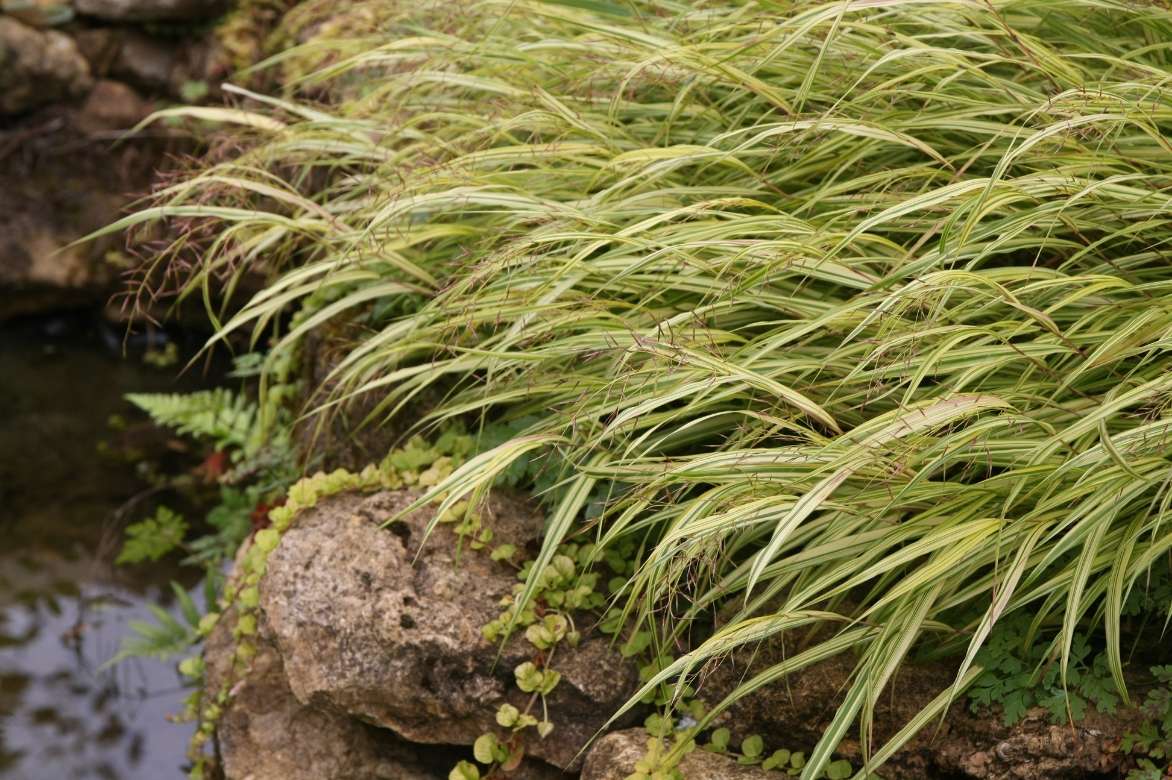
Hakonechloa macra ‘Naomi’ near a water feature
When to plant?
Best planting time for Hakonechloa is early spring.
How to plant?
Planting in ground:
- Immerse bucket to fully moisten rootball. Meanwhile, prepare soil.
- Turn and crumble soil to depth of a spade and an area of about forty centimetres each side.
- Amend with a spadeful of well-rotted compost and a handful of decomposed manure. You can also add a handful of a long-term organic fertiliser rich in nitrogen, such as horn meal. Its slow decomposition favours good rooting and feeds soil over long term. Foliage will find nitrogen to develop well. Lighten heavy soils with river sand.
- Fill planting hole with this mixture then dig by hand a planting hole to slip young plant into. Top of rootball should be level with soil.
- Firm with hand without over-compacting soil and water thoroughly, even if it rains! Initially you will need to continue watering according to weather and chosen aspect.
- Apply a mulch (dead leaves or ramial chipped wood for example) about 5 cm thick around base of plant to keep soil cool and encourage Hakonechloa to spread. Choose a mineral mulch (gravel, slate chips, sand…) according to atmosphere you want to create.
Planting in container:
- Immerse bucket in a basin or bucket of water until rootball is saturated.
- Meanwhile, after laying a good drainage layer, fill pot with good garden soil or a rich potting mix (add compost if needed) to which you have added a handful of horn meal. Use of water-retaining crystals can be useful since soil dries faster in container than in ground (follow dosage instructions on packaging). Substrate should come to about 5 cm from top of container.
- Place young plant in centre of pot, firm lightly and water gently, in small amounts, until water runs from drainage holes.
- Use a light mineral mulch (gravel, sand, fine slate chips…) which keeps soil cool, limits establishment of competing plants and contributes to decorative effect. Do not use heavy or bulky materials (large pebbles) or thick materials (fabric, plastic…)
Ensure thereafter that substrate never dries out completely. Using a saucer allows, in warm season, creation of a beneficial water reserve. In winter, turn saucer over. Choose pots large enough to allow Japanese forest grass to grow freely.
→ Learn more with our advice sheet: Growing Hakonechloa in a pot
Care
Like many grasses, Hakonechloa macra requires little care for maximum ornamental effect.
Your only real task is to ensure soil remains consistently cool and moist.
For the rest, only one annual intervention is necessary, at end of winter, cut all dead stems to about 3–5 cm above soil.
Add a handful of compost to feed plant well.
In case of pot culture, proceed in same way. After a few years, you will need to remove plant from pot and replace substrate. This is also necessary if Hakonechloa has outgrown pot.
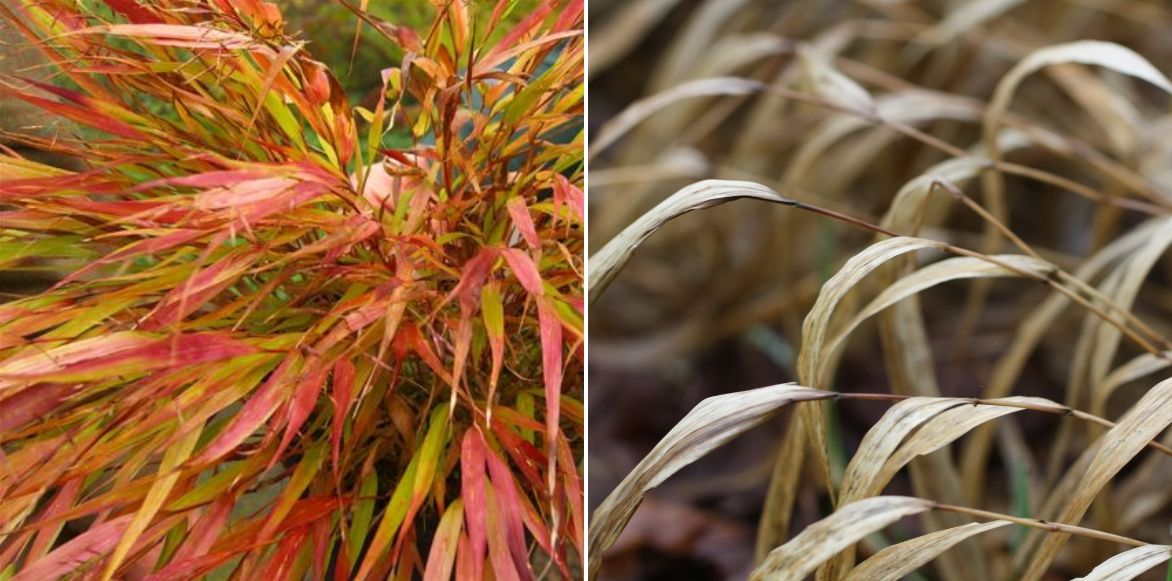
Spectacular foliage display of Hakonechloa ‘Nicolas’ in autumn / Foliage of Hakonechloa ‘Aureola’ still decorative in winter
Multiply
If you wish to multiply it, do so from a clump already well established, and carry this out in spring. The appearance of new shoots gives you the green light. The only reliable way to multiply your Hakonechloas is clump division.
Stump division
To divide a young plant of Hakonchloa :
- Cut back dried foliage, use a sharp spade, lift out the stump and divide it into several divisions.
- Replant them immediately and water
- In a pot, remove the Hakonechloa and divide it into several divisions. If you use the same pot, remember to change the potting compost before replanting, then mulch and water.
Pairing hakonechloas in the garden
Hakonechloa is a superb ornamental grass that grows equally well in a pot or in the ground. For pot choice, let your inspiration guide you. Bear in mind that the golden foliage of Hakonechloa macra ‘All Gold’ will, for example, contrast beautifully with a deep-blue pot. Ideal as a specimen to adorn a patio corner, a terrace or a cool-feeling balcony. Plant at centre of a large pot an Imperata cyclindrica ‘Red Baron’ with erect red foliage and surround it with Hakonechloas. Guaranteed effect!
Several pots provide punctuation in languid, calming shapes, gently rocked by wind.
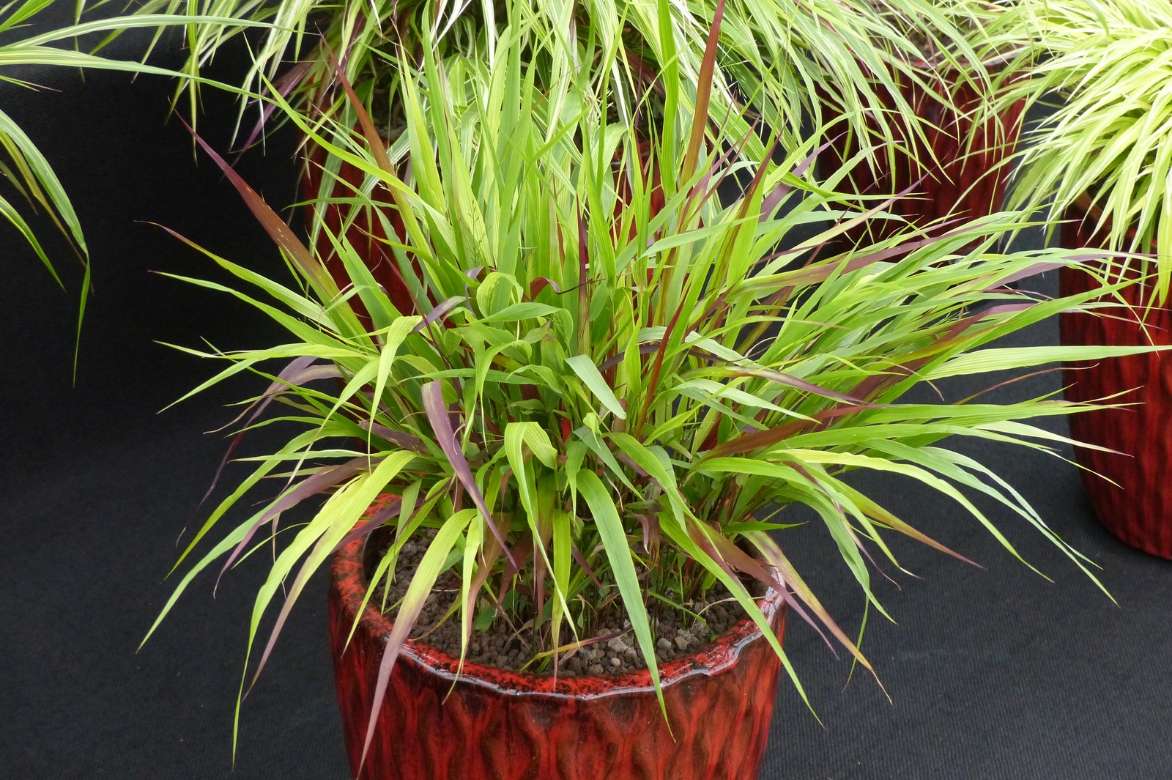
Hakonechloas lend themselves well to container culture: Hakonechloa macra ‘Beni Kaze’
Conditions in which Japanese forest grass grows are appreciated by a wide range of other plants, so there are many ways to combine them.
Plant at base of handsome trees or bush with clear trunk to set them off and integrate it without risk into compositions that suit many styles.
Understated atmosphere: focus on foliage!
Hakonechloa foliage, as well as being attractive, works wonderfully with other shade-loving plants with decorative foliage. Play on shades of green, contrast of shapes and textures or compose colourful contrasts. A border planned this way can easily be as beautiful as a flower bed.
Imagine a bed carpeted with low-growing Helxine of incomparable softness from which one or several clumps of Hakonechloas emerge. At back, place an Japanese maple, perhaps one with purple foliage such as Acer palmatum dissectum ‘Garnet’. A contrast of tones and shapes that always proves a safe choice.
Create an opulent effect with huge exotic leaves of a Gunnera manicata or a Tetrapanax, or the leaves of a Fatsia japonica ‘Spider’s Web’ with green splashed with cream-white. If space is limited, opt for a Rodgersia of more modest dimensions.
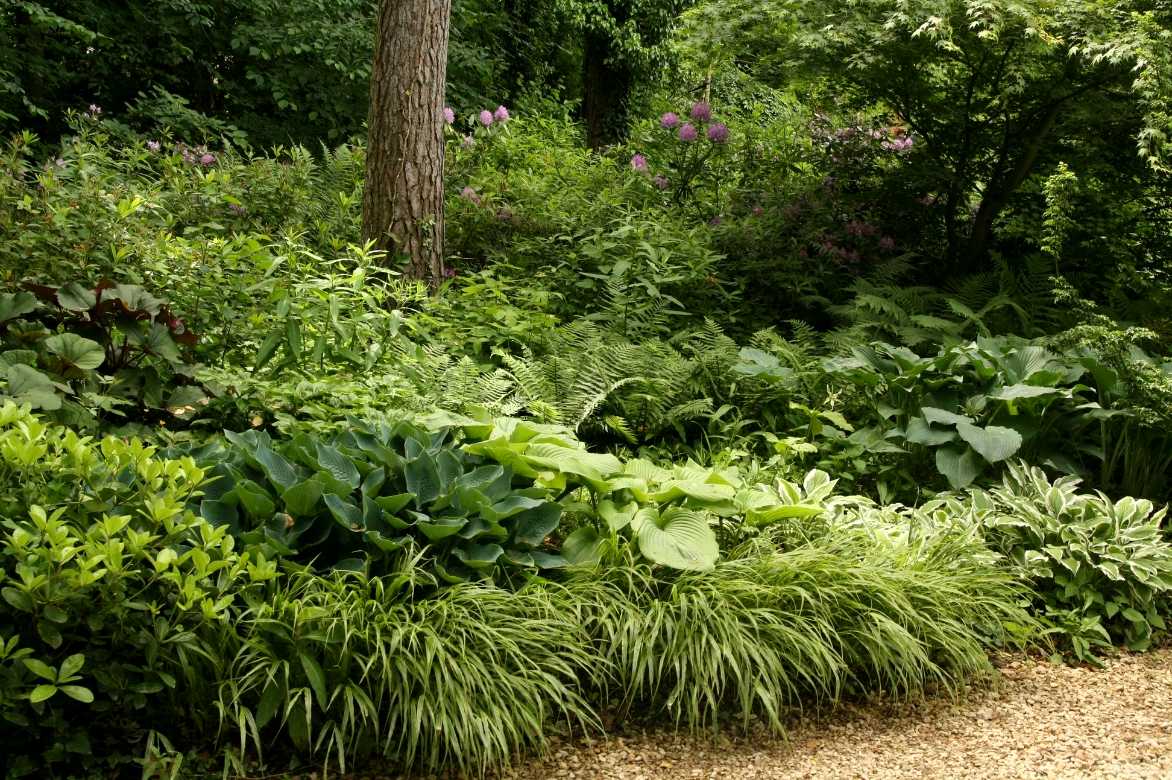
Example of an understorey foliage combination: Hakonechloa macra, Ligularia dentata, Ferns (Dryopteris affinis, Dryopteris filix-mas, Dryopteris wallichiana…) and various Hostas
Shiny, leathery evergreen leaves of a Pachysandra provide a permanent backdrop.
Enhance graphic effect with delicately designed fronds of ferns such as Athyrium niponicum pictum, whose leaves reflect metallic sheens of great beauty, or the luxuriant leaves of an hosta.
Create bold graphic echoes with clumps of Ophiopogon or introduce an oriental touch with bamboos and, if shade is not too dense, a Nandina domestica, the famous ‘sacred bamboo’.
Let a Pieris complete composition and bring a discreet floral note. Shapes, sizes, textures and colours of foliage provide long-term interest, but you can also add a few bulbs to mark spring.
Lively atmosphere: dare the colours!
Japanese forest grass offers foliage that pairs with a wide diversity of perennials or flowering bush. It sets off neighbours, links different colours and acts as punctuation to create rhythm for much of the year.
Many groundcovers with a spreading habit thrive at woodland edge or in light understorey. Ajuga brings a blue or pink touch in May–June, on foliage you can choose green or purple. Some Lamiums offer silvery foliage tones complemented in spring or summer by white, yellow or pink flowers, very bright in less exposed parts of the garden. Epimediums come in a wide palette of colours, both for foliage and flowers. Be tempted by Farfugium japonicum with daisy-like yellow flowers in autumn.
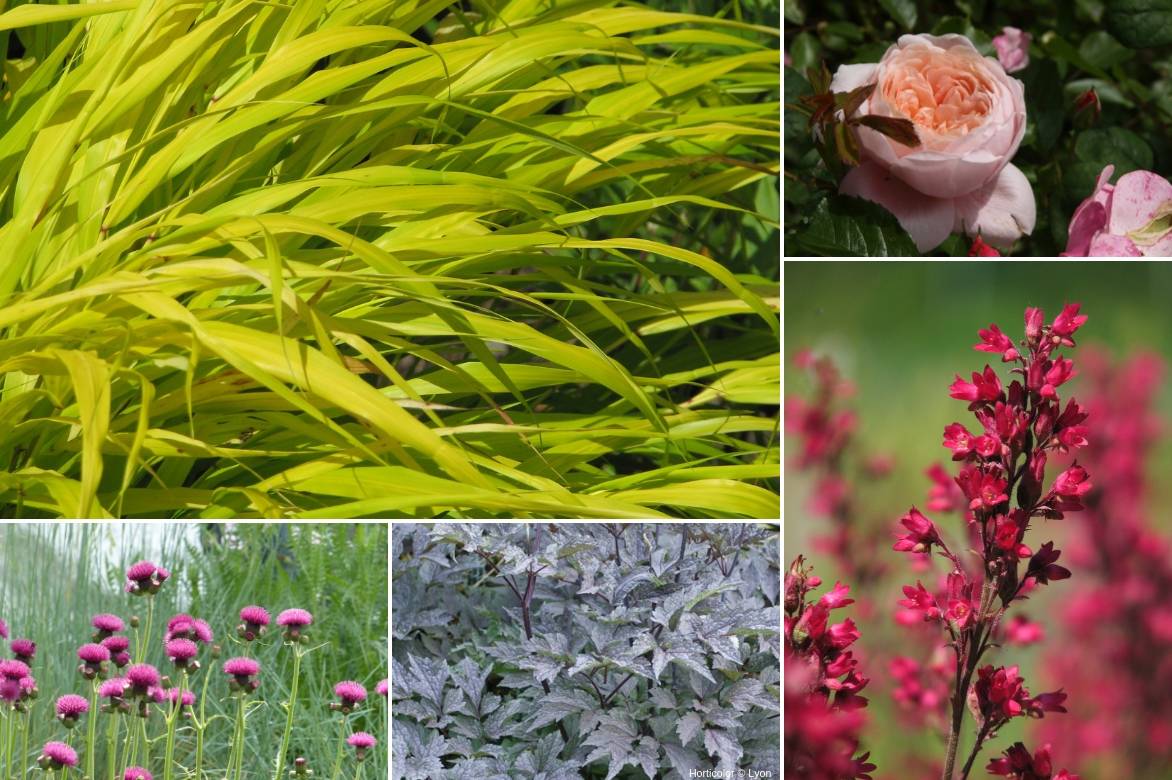
A lively pairing idea: Hakonechloa macra ‘All Gold’, rose ‘Queen of Sweden’, Heuchera sanguinea ‘Leuchtkäfer’, Cirsium japonicum ‘Rose Beauty’ and foliage of Cimicifuga simplex ‘James Compton’ which will flower later in the season.
For bush, choose a Daphne whose perfume enchants in midwinter, or a Hydrangea to bring colour mid-season.
Play up flower displays with hellebores, alchemilles, aquilegias and foxgloves, not forgetting perennial geraniums such as Geranium nodosum, which return faithfully each year.
Dare an Amsonia hubrichtii with fine foliage that takes beautiful autumn tones. If you are an experienced gardener, try Cardiocrinum giganteum whose large lily-like flowers can reach 2 m high in summer. Many other spring bulbs or summer bulbs add further splashes of colour. Fancy orchid-like flowers? Consider Tricyrtis with jewel-like blooms in late summer.
Also consider Hakonechloa in mineral settings. It can either accentuate curves or soften strict lines of stone elements, for example.
→ Discover our ideas for pairing with Hakonechloa
Did you know?
Poacées are found on all continents, including the coldest regions such as Antarctica. They grow in very different habitats, from the driest to the wettest, and represent an astonishing diversity, with more than 12,000 species identified to date. Poacées rank among the most diverse plant families, behind Orchidacées, Astéracées and Fabacées (formerly legumes).
The word ‘grass’ is often used to group together plants that look similar but are not all Poacées. This is the case of Carex (Cypéracée) or woodrush (Joncassée), for example.
The term ‘grass’, which should nowadays be replaced by ‘Poacée’, has thus entered common usage. It is still commonly used by many gardeners and nursery growers to designate plants that therefore do not all belong to the family Poacées.
Useful resources
- Our range of Hakonechloa at a glance!
- Our picks for a flowering shade.
- Our selection of perennial groundcovers for shade.
- Coloured foliage for shade.
- Our video tips: How to plant perennials?
- Find out more about grasses for a north-facing garden
- Our advice sheet: Hakonechloa, the most beautiful varieties
- Our advice sheet: To grow a Hakonechloa in a pot
- Discover our ideas for pairing with Hakonechloa
Frequently asked questions
-
Why is my Hakonechloa stunted?
Japanese herb is a Poaceae with slow growth. You will need a little patience to see the plant reach a pleasing size. Growing conditions also have a significant impact. Make sure your soil remains consistently moist, as dry soil slows growth.
-
My Hakonechloa isn't very colourful in autumn — why?
Plant colour in late season depends on a number of factors. After a not-too-dry summer, a relatively dry autumn with mild days and cool nights intensifies the process. Soil type can also influence the hues. Hakonechloa colours more intensely if it receives a minimum of light. In denser shade, colours are less pronounced.
- Subscribe!
- Contents
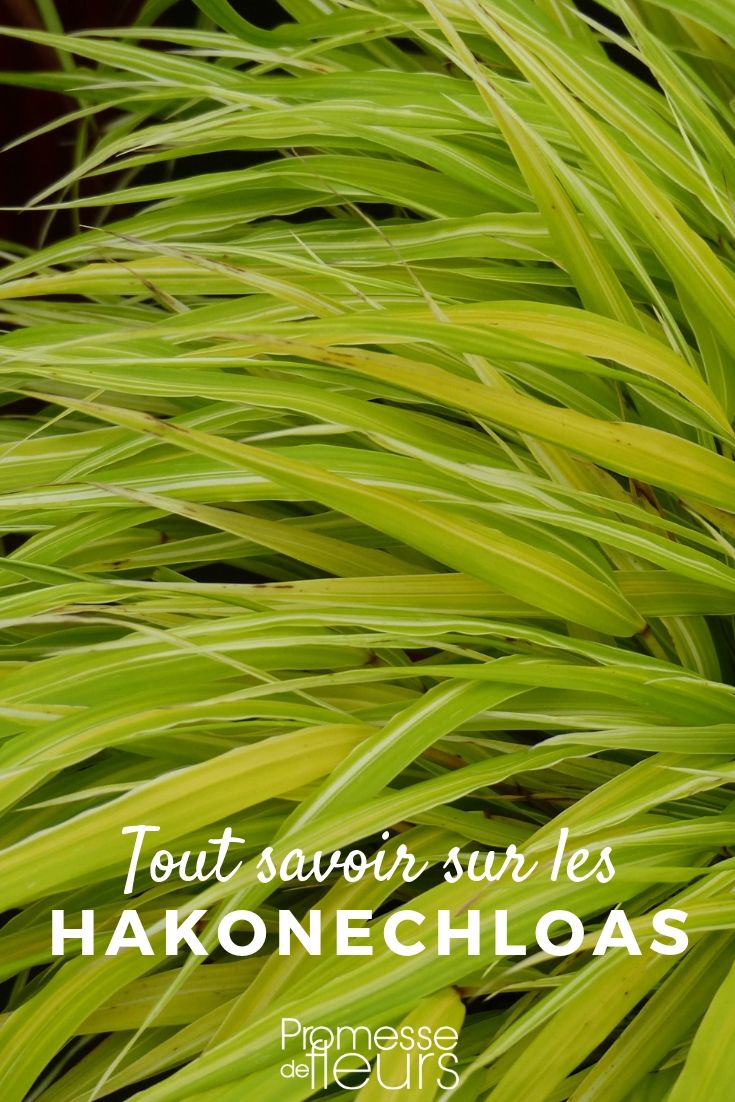































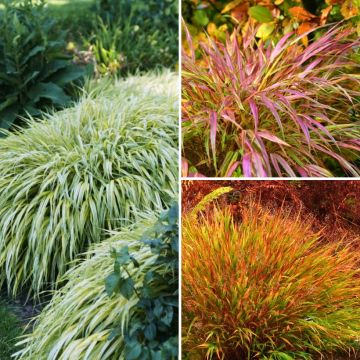
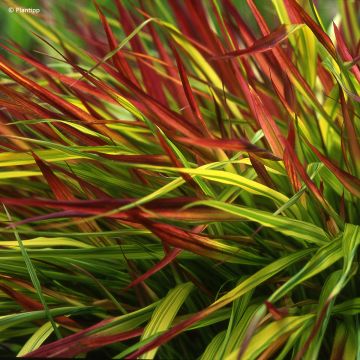







Comments